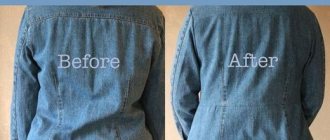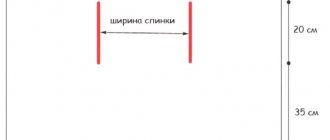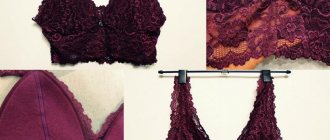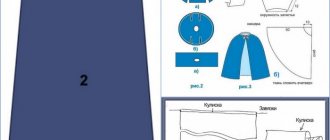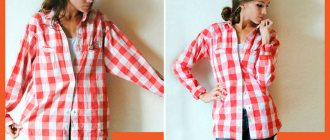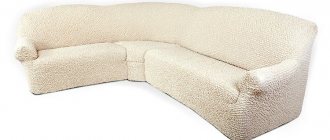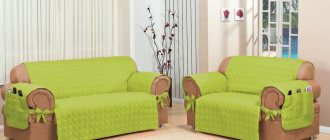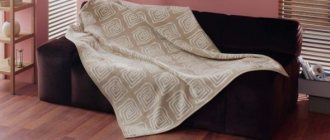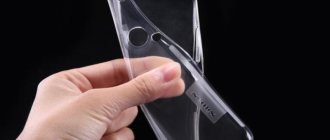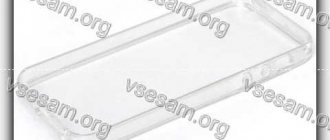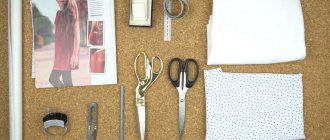Covers for upholstered furniture extend the life of its use or allow you to breathe new life into old furniture without resorting to rather complex and expensive restoration. Any housewife with a sewing machine can sew a decent sofa cover with her own hands. For example, how to sew a sofa cover in one evening, see video tutorial:
However, depending on the design of the sofa, its purpose and how it is used in the house, different types of covers may be best for a given sofa. Finally, the most in-depth lesson concerns one specific piece of furniture, and what to do if your sofa is just like that? Or do you want a completely different case for exactly the same thing? This article discusses how to design and sew a cover for a sofa of any type yourself, as long as you imagine how you want to see your favorite rookery.
Sofas with covers
Without pattern
It is believed that a cover for a sofa is sewn in the same way as for an armchair. This is true when it comes to a cut case. But if you make a cover for a chair without a pattern, it will always get confused: the area of adhesion between the fabric of the cover and the seat and back is small. But it is quite possible to sew a sofa cover without a pattern. And it can look amazing. Just don’t be fooled: firstly, it will take a lot of fabric. The cut will need a width of approx. 5 seat widths and 2.5-2.7 sofa lengths. Secondly, the work will be quite painstaking; for an everyday case it would probably be easier to develop a pattern (see below). But let us emphasize: sewing the same luxurious case with cutting will be much more difficult. And if a sofa has a camber of armrests and a curved/inclined backrest, then without solid sewing experience it is hardly possible. And without a pattern - without significant problems. At the cost of increased fabric consumption.
How to sew a sofa cover without a pattern is shown in the figure:
How to sew a sofa cover without a pattern
Let us give some key explanations. At pos. 3 shows the reinforcement of the seams at the border of the seat with the back and armrests (see below); a cover without reinforced seams will constantly come off. After marking for the reinforced seams, the cover blank is removed, the seams are sewn with reinforcement, the blank is put back on, the reinforced seams are straightened along the contour of the seat, secured with pins (not safety pins) on the sofa and work continues.
Further, according to pos. 4, form decorative folds on the facade. They are swept away and secured to the sofa with pins or pushpins. After this, the rear folds are formed in the same way, pos. 5.
Note: at the stage according to pos. The 4 folds on the front overhang of the seat must be assembled so that the fabric of the cover lies flat along the curb line, but without noticeable tension. Why - see below.
Now comes the hard part. The fact is that a cover of this type is always made with an elastic band so that it can be removed for washing or, conversely, put on on special occasions - such covers are mostly ceremonial in middle-income homes. The elastic is inserted along the line of the sofa border (see below), but try to achieve a neat gathering of its sleeve if you sew it (from the inside out, of course) onto a piece removed from the sofa! And without this, the whole look is lost. Here you will have to work with your hands or, perhaps, with a manual mini sewing machine. In this case, the sleeve (drawstring) stripe under the elastic band is done as follows. way:
- We push the folds on the sidewalls along the border line to the back corners and sweep them onto a living thread;
- If the sofa has a camber of armrests and/or a tilt/bend of the back, measure its overall dimensions, i.e. dimensions of the projection of the sofa on the floor (see, for example, item 6);
- We cut out 2 strips of fabric with a width of 5 cm for the drawstrings, the same as for the cover. One drawstring - U-shaped, on the front and sides. The second is straight to the rear;
- We apply a U-shaped drawstring, secured with pins, along the line of overall dimensions so that the tails at the back are equal in length, and mark the front corners on the drawstring;
- Remove the workpiece and turn it inside out (be careful not to rip off the back corners!);
- We sew the P-drawstring from the inside out: first along the front corners, then we sew it along the front, then we sew the sides;
- We also sew on the back straight drawstring;
- We thread the elastic through and sew its edges together with an overlap of approx. 5 cm. Elastic length – approx. 15% less than the length of the perimeter of the sofa along the border line;
- Remove the basting of folds on the back corners;
- We turn the workpiece onto the face and manually evenly gather the folds over the elastic band. Or unevenly, that’s up to your taste;
- We fix the resulting decorative folds with stitching (do not grab the elastic!) on the front and sides separately. Previously formed monumental folds on the armrests are not stitched! To tighten the cover if necessary, just stretch the back drawstring and the unstitched front corners;
- We put the cover on the sofa (item 6) and admire it. Or we quarrel, tear everything apart and do it again.
Note: the work of sewing drawstrings and gathering folds over the elastic band is greatly simplified if you have a mini sewing machine for hanging sewing - then you don’t have to remove the workpiece from the sofa.
About reinforced seams
Reinforcing the seams in a sofa cover may, firstly, be necessary not only along the contour of the seat. Secondly, reinforced seams can also serve as decorative edgings.
The first method of strengthening a seam is illustrated by pos. 1-5 fig. It is applicable for cut covers made of fairly dense fabrics. So that the insert sleeve with the cord does not wrinkle, it is stitched by slightly pulling it towards itself and bending it on the edge of the machine table (item 3): let it pull itself, and the sleeve folds itself. Fold only its very end with your fingers, pos. 4.
Ways to reinforce seams in a sofa cover
If the fabric of the cover is thin or it is sewn without a pattern, use a seam reinforcement scheme according to pos. 6. Hem allowance 2x30 mm. In the case of sewing a cover without a pattern, the allowance must be pinned together with safety pins already when laying out the fabric on the seat (item 3 in the figure with the stages of sewing without a pattern). There is a nuance here: the reinforced seam along the contour of the seat is always turned on the wrong side: this way it does not feel like what you are sitting on, and the cover collects less dust and requires cleaning less often. Therefore, stages 1-3 in Fig. with sewing stages without a pattern, it is made with the fabric inside out, and turned face up for stages 4-6.
Decoration
You can decorate the finished product with bows, appliques or stripes. To decorate the armrests, a decorative rope with a diameter of 1 cm is best suited. Framing with a wide braid or ribbon will help to emphasize the lower part.
Covers for a sofa (chairs) can radically change the visual perception of furniture.
The isoprene layer plus dense pile allows you to avoid puffs.
We will reveal it locally
Cutting a sofa cover locally is technologically simpler than sewing a dress cover without a pattern, and developing patterns for the cover, and is also quite economical: up to 25% of the cutting area is wasted, depending on the thickness of the seat and backrest. This method is suitable for simple shaped sofas.
With the opening in place, the trace is sewn. sofa covers:
- Covers for geometrically simple, non-folding sofas without armrests, common in modern style interiors, and for book sofas, see below.
- Linings (case covers) made of technical fabric for dress covers sewn without a pattern, so as not to bother with the pattern of the cover case.
- Everyday saving covers (item 3 in the figure), incl. on the sofa in a formal cover.
How to sew a sofa cover with cutting in place is shown in pos. 1 and 2 pictures:
Sewing a sofa cover with cutting to place
Recommendations to reinforce the seams with wooden inserts are most likely either an unqualified translation of the original source, or simply an intuitive guess. In fact, using suitable pieces of wood, folds are formed to reinforce the seams with a turn, see above. If the pieces of wood are left in the seams, they will soon rub through both the cover and the upholstery of the sofa. At pos. 4 gives examples of how to decoratively decorate the covers of the wings of the cover on the armrests; Of course, your own solutions are also possible. If covers are required only for armrests, they are designed in a similar way; In this case, fabric waste is zero or almost zero.
Note: it is advisable to sew covers separately for the armrests and, possibly, the back of the sofa if it is in a public place or, say, in a frequently visited hallway or on the veranda of a private house.
About the role of the case cover
The undercover, firstly, improves the adhesion of the cover made of beautiful but slippery fabric to the sofa. In this case, it is sewn from thin cotton fabric, for example, linen. Old yellowed sheets are perfect; a slipcover made from them holds the satin cover on the faux leather sofa as if sewn on.
Another purpose of the cover is to protect the sofa itself from dirt and grease. If the sofa is leather, this is very important. In this case, the undercover is sewn in 3 layers: a fairly dense technical fabric (linen canvas, matting; you can use propylene from bags) is placed on the upholstery of the sofa, followed by a layer of padding polyester or, better yet, holofiber, and the cover holds the canvas, as in the previous one. case.
For a book
Thanks to Ikea, everyone now knows what a Eurobook sofa is, see figure:
Construction of a Eurobook sofa
It is not said as a reproach: book sofas are indeed very comfortable, and in small one- or two-room apartments they are sometimes irreplaceable. It is only necessary to note that sofa beds of exactly the same design were produced in the USSR back when not every average person in Europe had heard of the embryo of the EU in the form of Benelux. True, sofa sofas were supplied to furniture stores in single copies, which had a small factory defect. Conditional ones were distributed at the top according to orders or were bought up through connections by those admitted to the hairy hands of the Ivan Ivanovichs. According to rumors, just such a sofa bed stood in the Dnepropetrovsk (in his hometown) apartment of the most Ivan Ivanovich of all Ivan Ivanovichs - the unforgettable Leonid Ilyich. Quite plausible: he was a simple and good man, only weak for his post. This is probably why they chose him when the bald clown in power turned out to be no better than the mustachioed monster. But let's get back to the topic.
You need at least 2 separate covers for a sofa book, or 3 if you want the folded back to not stand out in color. You may also need to cover the armrests; then you will need 4 or 5 separate covers. Covers for the armrests of a book sofa are cut in place, as described above, but with one condition: at the bottom, under the underside of the armrests, they must be tightly fastened with a zipper with large teeth, otherwise the mechanism will always be tighten and soon break; The option with a rubber band does not help with this. In fact, covers for the armrests of book sofas are their sore spot, which, as far as we know, has not yet been cured by anyone.
There are no problems with covers for the mattresses of the sofa-book. The pattern is given on the left in Fig. with sizes for popular models:
How to sew a cover for a sofa book
How the corners are stitched is shown in the center. The cover of the book sofa is tightened with an elastic band (on the right in the figure), but first you need to mark the armhole in place along the mechanism. It is a simple straight cut for the boss that fits into the cutout of the lever and is edged with trouser braid; Bias tape wears out soon. The armhole is pulled together from the bottom with an elastic band. To put on or take off the cover, you will first need to remove the linkage; this is done simply by hand without tools, see the instructions for the sofas.
Materials, tools
Sewing sofa covers should begin with choosing the material and preparing all the necessary tools.
Required Tools
To sew a cover for a sofa or chair, you will need to prepare the following tools:
- scissors;
- measuring tape;
- overlock;
- threads;
- pins;
- chalk for marking;
- sewing machine.
The sewing machine should be designed for sewing medium and heavy fabrics.
Tools for sewing furniture covers
Materials for production
There are a number of requirements for textiles for sofa coverings. Experts recommend giving preference to the following matter:
- flock;
- microfiber;
- velor;
- cotton;
- jacquard;
- shinilou;
- natural and artificial leather;
- natural and artificial fur.
First of all, the material must be wear-resistant, durable and easy to clean.
Types of furniture fabric
According to the pattern
A sofa cover, sewn according to a self-made pattern, first, makes the most complete use of the cutting area. Considering that fabric for a beautiful case costs somewhere between $30-$50, this is important. Secondly, only using a homemade pattern can you sew a truly original and unique product.
Note: the sofa border line is located either 10-25 cm above the floor, or at the height of the transition of the vertical surfaces of the armrests into inclined ones.
Learning how to make patterns for upholstered furniture covers is not that difficult; much easier than for clothes. To get started, you can watch a video course on designing covers for upholstered furniture:
Video: lesson on cutting furniture covers
When starting to create patterns without experience or with initial experience in sewing, there are one more things to consider. To create a pattern for a sewing piece according to size, you will have to, firstly, remove at least a dozen of them from the sofa (see on the left in the figure), but this does not solve the matter.
Measuring diagram for creating a sofa cover pattern
For example, for the same sample, you will also need to remove the length of the generatrix (curvilinear part) of the backrest and the length of the curves of the armrests. If the sofa is of an extremely simple shape, the pattern can be made from rectangles (on the right in the figure), but in both cases you need to take into account the tightening of the fabric, and here you can’t do without experience. Professional seamstresses in production have a saying: “You can tighten everything, but how will it wear?” A cover made of stretched fabric will not look good, and will soon fall apart.
For beginners, it is better to create patterns for a cover for a sofa or other upholstered furniture and sew it using a 3-stage method. By the way, famous couturiers readily use it, but they buy special paper. In general, the same as described below, but in rolls and not printed. The procedure is:
- Glue newspapers into panels of the required size;
- Having placed the cloth on the surface to be worked on, for example, a seat, smoothly smooth it from the middle to the edges. If you can’t get rid of the wrinkles on newsprint, stop! Here is the edge of the current part and the beginning of the next one;
- A paper pattern is cut out along the marked edges of the part;
- Using newspaper patterns, the cover is cut with double or triple the seam allowance;
- Sweep and adjust the parts of the cover in place, achieving an even fit;
- Using the fitted parts of the cover, cut out patterns for the parts of the cover from thick glued paper (for example, drawing paper);
- Sew and put on the cover, and then the cover.
The essence of this method is that thin, unglued paper stretches until it breaks or wrinkles in much the same way as rigid fabric. That is, if the newspaper was able to be flattened in situ, then the fabric will cover it evenly, but without constriction. You just need to glue the newspapers into sheets so that the glue seam does not prevent the paper from stretching. Once upon a time, for this purpose, tailors glued newspapers with gum arabic, which gave an elastic seam, and in our time its full-fledged replacement is an office adhesive pencil. It is advisable to glue it “poke”, like the tailors of old: we press the pencil to the paper, turn it, apply the glued one. The next poke is after 5-7 cm.
Model selection
Models of sofa covers amaze with their diversity. There are products that completely hide pieces of furniture, making them seem flying and airy. They will be appropriate in the following styles - classic, English, modern.
If you are a lover of practicality and functionality, then you will like throws made to fit snugly on a sofa or armchair.
Here you will not see any decorations, such as bows, flounces and ruffles. But you will definitely like the pockets located on the side of the case and on the armrests. You can put glasses, a newspaper, a book in them.
In addition to furniture, capes can be sewn for various things - laptops, TVs, etc. A phone case for your hand looks interesting. Experiment and imagine. And you will create a truly unique decor.
What to do with the angle
The most difficult thing is to sew a cover for a corner sofa. It is always sewn in parts, and here there are 2 options. The first is an attached corner section, on the left to the next. rice. You need to sew 5 covers: for the main section, the side section, the back, the armrests, and sew them with a reinforced seam.
Covers for corner sofas
The second is an insertable corner section (on the right in the figure) or a sofa with a solid structure (in the center). In this case, the covers are cut and sewn separately onto the wings and corner of the sofa and stitched together from the inside out. The main thing here is to hide the seams between the wings and the corner, because... they will fit on the seat and back. The best way to do this is pleated, in the center in the figure, but this is a complicated matter, and factory pleated fabrics are not much easier to work with. Another is to choose the color of the cover fabric so that the seam is lost in it, on the right in Fig. And there is one more trick.
More about the seam
You can make the front seam much more hidden if you sew it with a tightening fit on the fabric. If the entire cover is sewn from a fairly rough material, for example, canvas in a rustic-style interior, then all its seams should be seams. How to sew a seam with a seat at home on a regular sewing machine, see the final video:
Advantages of a self-produced product
- Compared to restoration, this is a cheaper method.
- It is convenient to use and easy to wash.
- Opportunity to create your own unique design.
- The process does not require professional training and takes several hours.
- You can make several models and experiment with the appearance.
- If there are chairs from different sets next to upholstered furniture that are completely out of harmony, additional covers made for them will solve the problem.
- Handmade products are highly valued.
The fabric fades, is wiped out in places, stains, puffs, and others appear on it.
Since the cover will experience a lot of stress at the seams, especially if the pattern is very tight, some seams can be stitched twice.
Choosing fabric for the cover
Choosing the right material for the case is half the success. It depends on how long it will serve you. Protection for furniture should reliably protect the surface from dust and other contaminants, be durable and pleasant to the touch.
When choosing a material, you need to start from the purpose of the sofa. If it is used as a sleeping place, you should give preference to durable artificial fabrics - flock, velor, chenille. Intensive exploitation, even for 12 years, is not capable of violating their integrity. At the same time, they do not lose color under the influence of ultraviolet radiation and do not fade.
A cover for a children's sofa must meet environmental and safety requirements. In this case, the optimal choice is jacquard.
A flock cover with a velvety texture is perfect for the living room - a cozy, soft and at the same time incredibly durable and easy-to-clean material.
To make the cover impenetrable to the ubiquitous cat's claws, it should be made from a special fabric called relax. The material is similar to leather, contains durable thick pile and a layer of isoprene. Thanks to these features, the appearance of puffs on the surface is excluded.
Characteristics of various fabrics
- Velor is a synthetic or natural material with a velvety texture and high wear resistance.
- Flock is a highly durable, but soft and delicate fabric. Not subject to deformation and color changes. Any stains can be easily removed from the surface, the material does not become electrified and does not attract dust.
- Cotton - allows you to create bright covers for furniture. The natural composition makes it safe for the human body.
- Jacquard is a durable double-sided fabric. The presence of cotton, polyester and elastane makes the material resistant to deformation and damage.
Varieties
Every day, the developers of blankets, bedspreads, and covers do not stop developing their works, continuing to fantasize and use new tricks. As a result, this led to a wide variety of styles, from simple to multifunctional, for all models of sofas and armchairs.
Features of covers for sofas and armchairs, their variety
Types of capes:
- Universal . The material is shaped like a rectangular towel, which is simply laid over the sofa. It suits both sofas and armchairs.
- Fragmentary . Rectangular material secured with Velcro or ties.
- With additional functionality. Includes small pockets for the remote control and other household items, this is important for small rooms.
- Euro cover or tension cape . It completely covers upholstered furniture, repeating its shape and bend, smoothing out all the unevenness on the surface.
- Plaid with different effects. The most favorite to use are housewives who like to wrap themselves in a blanket that retains heat, which will not only warm, but also protect the sofa.
A way to give your sofa a new life
Sizing
To correctly determine the size of the cover, you need to measure the dimensions of the sofa. This is done in stages, using a flexible measuring tape or tape measure. The following manipulations are performed:
- Visually you need to divide the furniture into several approximately equal rectangles.
- You need to stand facing the seat and determine the dimensions of the left and right sides of the protrusion.
- Measure the backrest from the armrest to the corner.
- Find out the parameters of the handrails: first the length, and then the width. Be sure to measure both; they may differ slightly.
Next, the resulting values are added and multiplied by two. Then you can roughly draw a sofa on paper and transfer all the parameters there. Each number must be written down immediately after measurement so as not to forget. After this, you can begin purchasing material for sewing the cover and creating a pattern on special paper. The recommended margin for purchasing fabric is from 0.5 to 1.0 m. This is especially important for inexperienced craftswomen, since measurements may be inaccurate.
Decor features
Today, a variety of decorative elements are offered to make the finished product even more attractive. Such elements not only have an aesthetic role, but also make it possible not to notice mistakes that were made in the work.
The following are used as decorative elements:
- bows;
- ribbons;
- frills;
- stripe;
- applique.
Decorative pillows are often used as decoration. The same texture, but different colors will allow you to get a spectacular solution. Some designers recommend using the so-called “trio” when arranging the interior. The point is to do everything in one stylistic design: cover, pillows and curtains.
Advantages and disadvantages of sofa covers
The benefits of using self-made removable covers are obvious, since they:
- mask defects in old furniture;
- are much cheaper than completely reupholstering;
- give the interior uniqueness;
- do not require expensive cleaning;
- easily removable for washing or repair;
- allow you to quickly change the look of a room.
Among the disadvantages are:
- the need for additional spending of money and time;
- if the sofa serves as a sleeping place, and the cover prevents it from unfolding, the removable “upholstery” will need to be removed and put on daily;
- choosing a fabric that will not shrink and become covered with pills is not so easy.
You can combine disparate pieces of upholstered furniture using identical removable covers.
